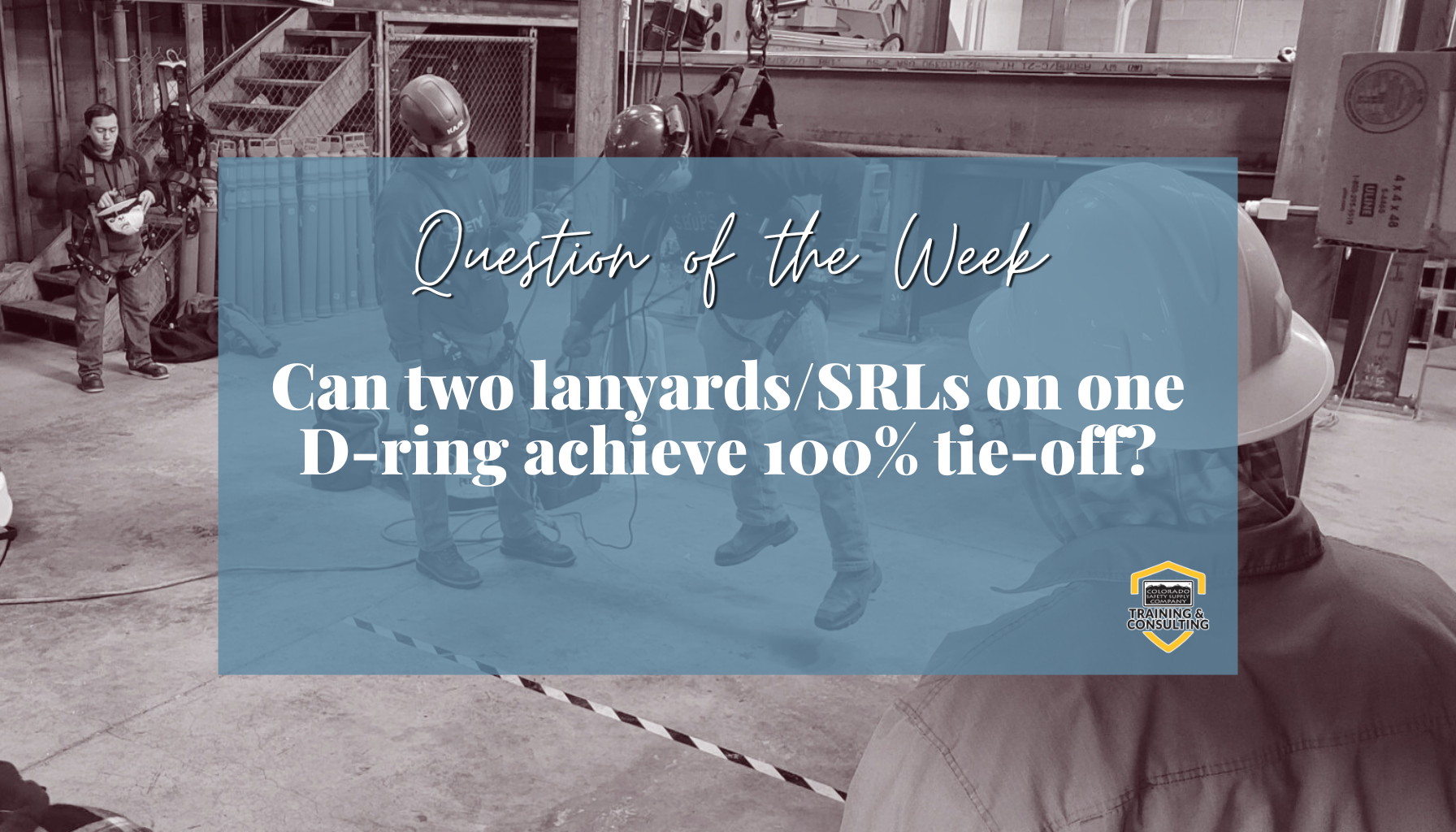When working at heights, ensuring proper fall protection isn’t just a recommendation—it’s a lifesaver. One common question we get is whether it's safe (or even allowed) to hook two lanyards or self-retracting lifelines (SRLs) onto a single “D” ring on your harness to achieve what's known as 100% tie-off. Even though this might sound like a simple fix, it turns out it's not compliant with industry standards.
What Does "100% Tie-Off" Mean?
In simple terms, 100% tie-off means that a worker is always securely connected to an anchor point—even while moving from one location to another. This continuous connection is usually achieved by using twin-leg lanyards or SRLs that allow for smooth transitions without ever leaving the safety line.
Why You Shouldn’t Hook Two Lanyards or SRLs to One "D" Ring
At first glance, connecting two fall protection devices to one D-ring might seem like a clever workaround. However, there are several important reasons why this practice is unsafe:
-
Overloading the D-Ring
Every harness is engineered with a specific load rating for its attachment points. Using a single D-ring for two devices could exceed that rating, potentially compromising the strength of the harness when you need it most. -
Risk of Interference and Shock Loading
When two lanyards or SRLs are attached to the same D-ring, they can interfere with one another if a fall occurs. This interference may lead to unexpected shock loads on both the anchor point and your body, increasing the risk of equipment failure or serious injury. -
Manufacturer Guidelines and OSHA Compliance
Most fall protection equipment manufacturers explicitly state that you should not attach two devices to a single D-ring—unless the harness is specifically designed for it. According to OSHA 1926.502(d), personal fall arrest systems must be used exactly as the manufacturer instructs. Not following these guidelines can result in non-compliance and legal liability.
The Right Way to Ensure 100% Tie-Off
Instead of trying to jury-rig your equipment by connecting two devices to one D-ring, here are some safe, OSHA-compliant alternatives:
-
Use Dual-Leg (Y-Lanyard) or Twin-Leg SRLs
These are specifically designed for continuous tie-off. They allow you to move freely while ensuring that you’re always connected to an anchor point. -
Attach Each Device to Its Own Approved Anchor Point
This method prevents overloading a single D-ring and distributes weight appropriately, enhancing overall safety. -
Always Follow Manufacturer Instructions
It might sound obvious, but ensuring that you’re using equipment as the manufacturer intended is key to preventing accidents and equipment failure.
Safety at heights isn’t something you want to compromise on. While the idea of hooking two lanyards or SRLs to a single D-ring might seem convenient, it’s not a safe or compliant solution. By investing in properly rated, dual-leg equipment and following all manufacturer and OSHA guidelines, you’re taking the best possible step toward protecting yourself and your coworkers.
If you’re ever in doubt about your fall protection setup, don’t hesitate to reach out to a qualified safety professional or the equipment manufacturer. Your safety is worth it!
Contact us at 303-537-5832 for more information or to discuss your fall protection needs.















